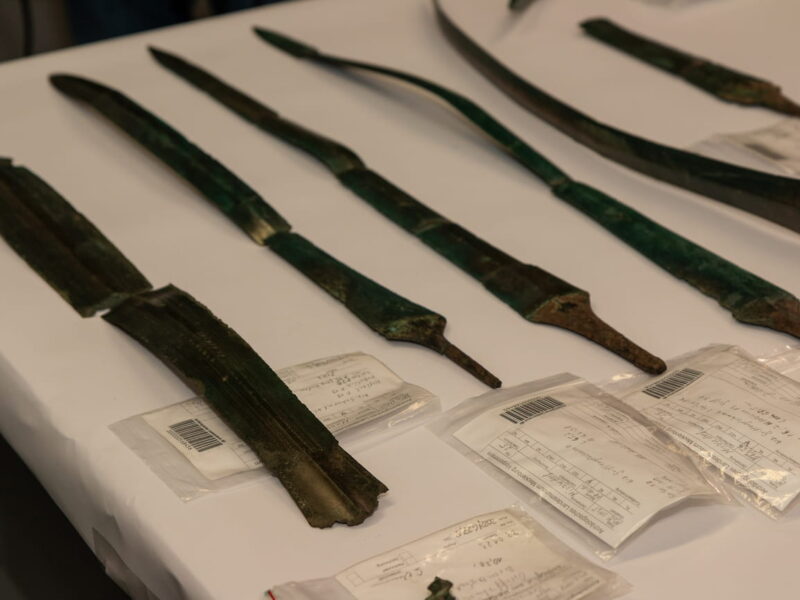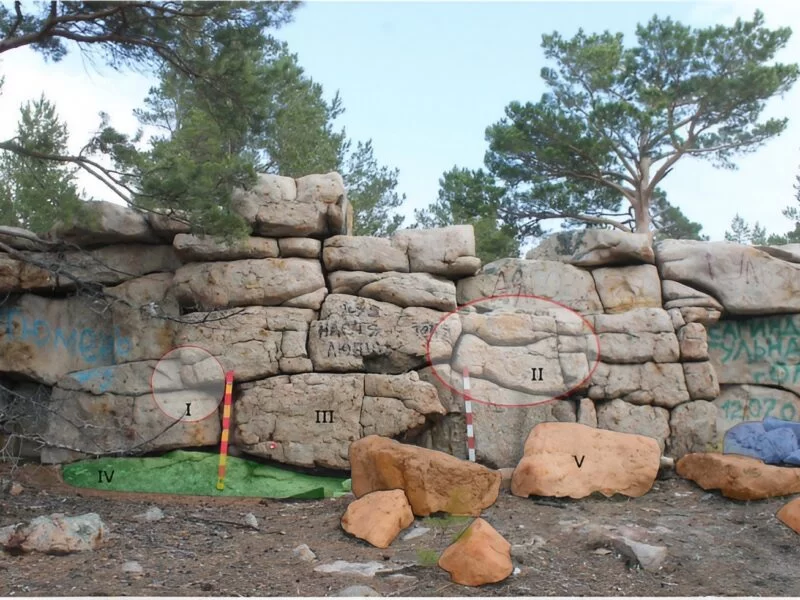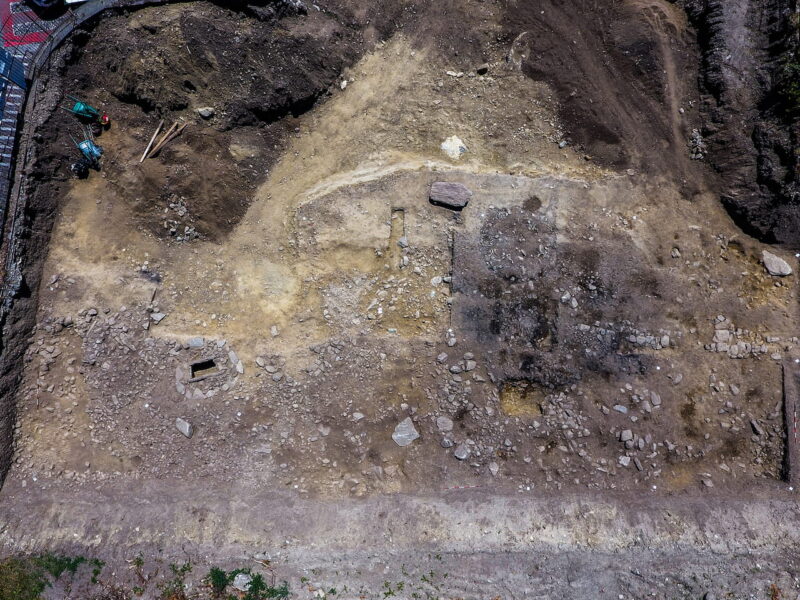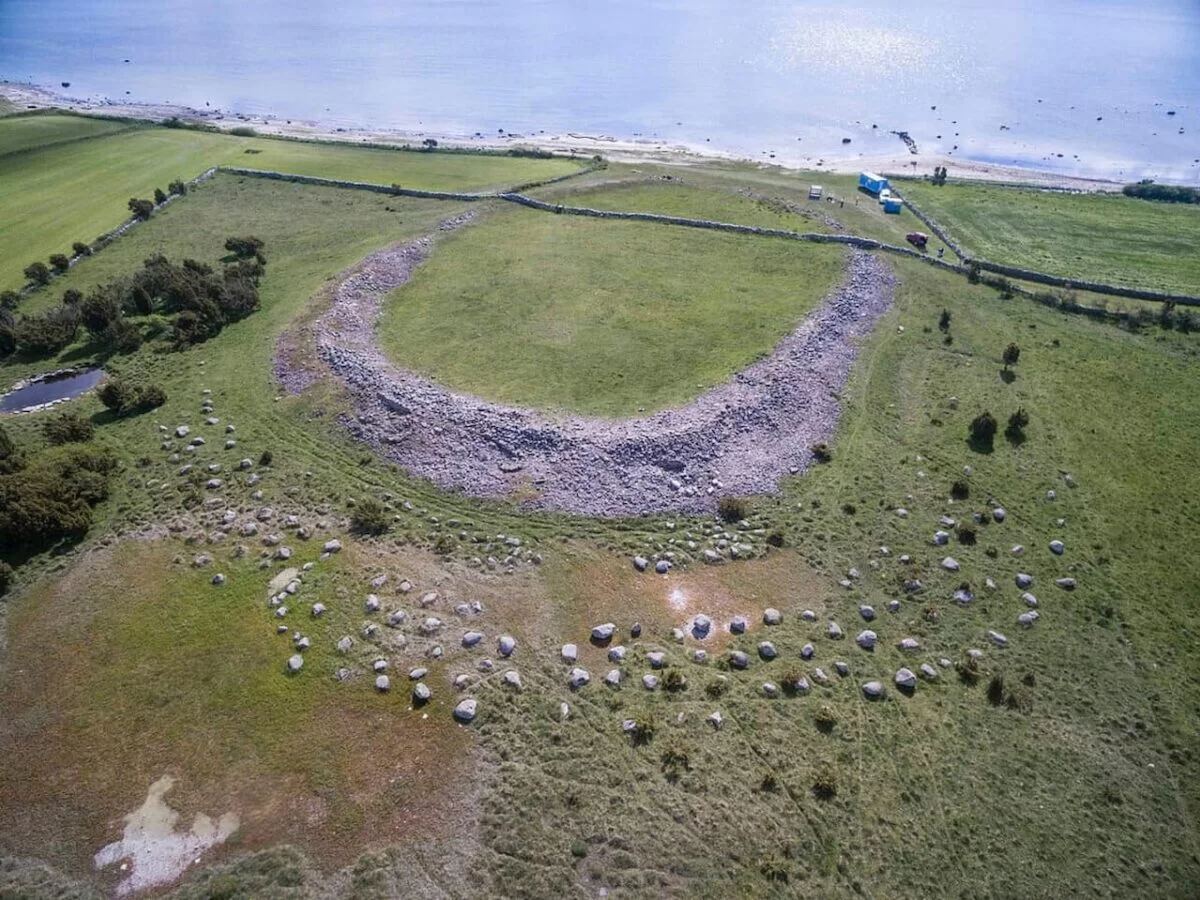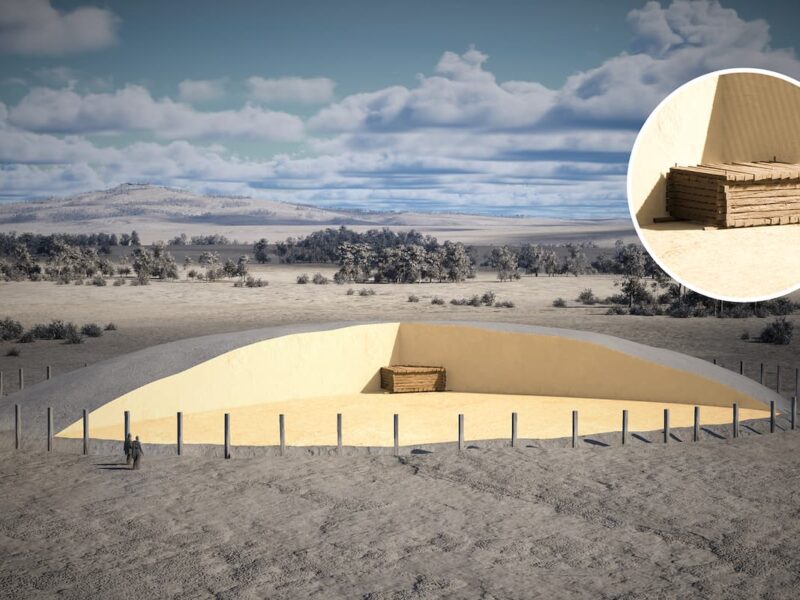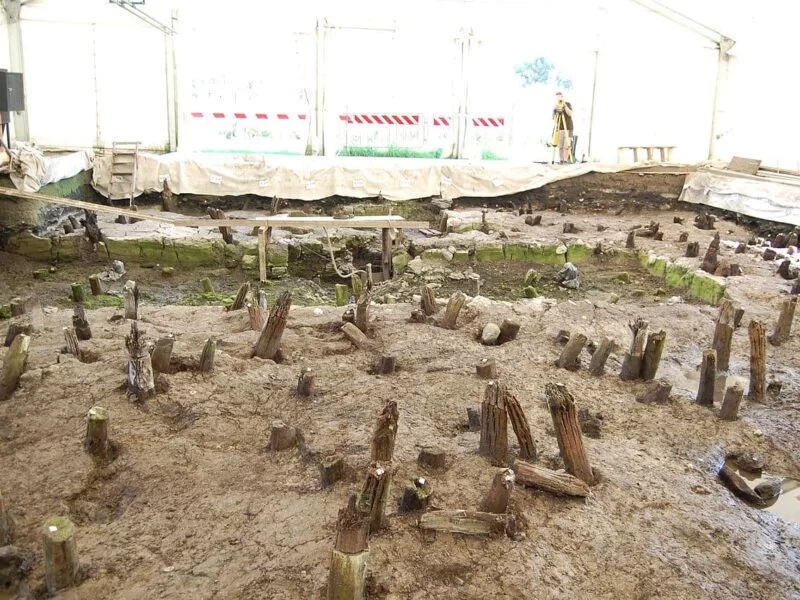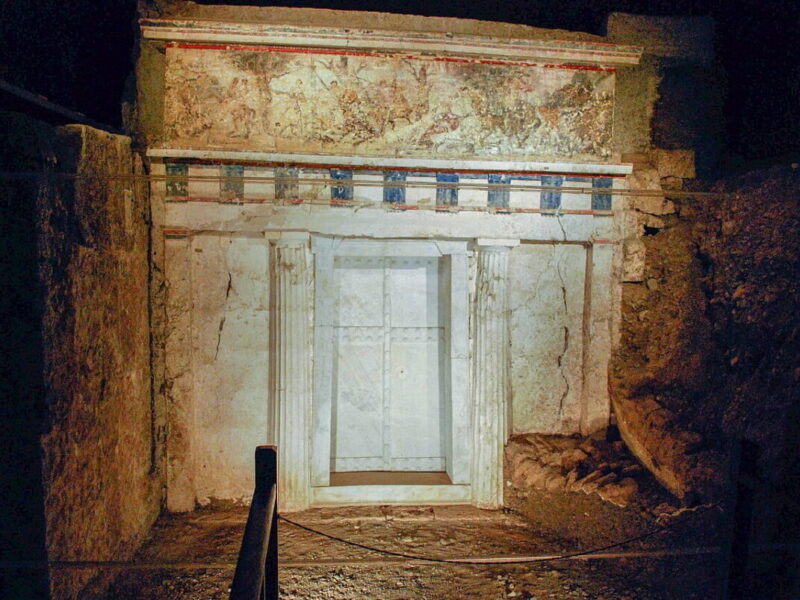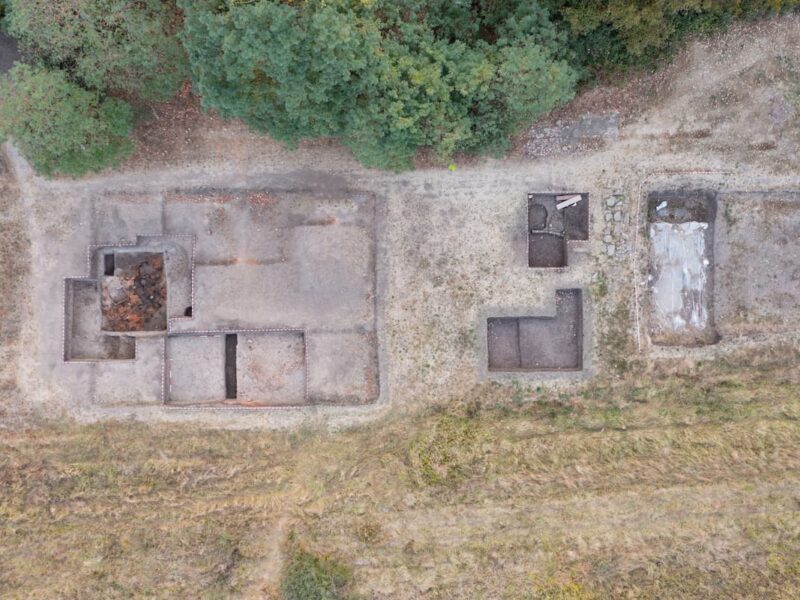Large-scale archaeological excavations from 2018 to 2022 impressively demonstrated, with a total of almost 140 house plans investigated, how people lived in the third millennium BC at the circular sanctuary of Pömmelte, located near the city of Barby in the state of Saxony-Anhalt, Germany.
Various scientific methods now even allow us to reconstruct what people ate and drank at that location. The current excavation by the State Office for Monument Preservation and Archaeology (LDA) of Saxony-Anhalt on the site now helps complete the picture and fully capture the ritual and settlement landscape of the third millennium BC.
This year’s archaeological investigations are dedicated to the areas adjacent to the northeast and northwest of the circular sanctuary. The results consolidate the image of the settlement at the circular sanctuary. With three new house plans from the Bell Beaker culture period discovered, it can now also be considered that the predecessor of the mega-settlement of the Únětice culture of the Early Bronze Age is the largest of its kind in central Germany. A total of 12 buildings are distributed over approximately 39,000 square meters in the immediate vicinity of the sanctuary. In these houses, the builders probably lived in the 24th century BC.

However, the identification of the locations of the houses of the even older Corded Ware culture is still pending. These people had erected a small rectangular sanctuary at the site and also buried their dead there, as evidenced by a newly discovered, though poorly preserved, burial. A recently discovered settlement pit containing fragments of two containers, a decommissioned axe, and flint blades reflects a classic spectrum of debris and could be another indication of nearby lost architectural structures. So far, the Corded Ware settlement could only be spatially delineated through displaced individual fragments.
This year, however, the economic areas of the Corded Ware culture (26th to 23rd centuries BC) could be further investigated. The storage area, which comprises a total of 78 silos, must have housed tons of grain. A pit about 1 meter deep has a capacity of approximately 1.5 cubic meters, equivalent to about 1,000 kilograms of grain.
With a modern grain consumption of approximately 100 kilograms per person per year, the contents of this series of pits could have easily fed 780 adults for a year. The few remaining grains in the pits were identified archaeobotanically and show a wide range of grain types once cultivated at the circular sanctuary: mainly wheat (Triticum aestivum/durum/turgidum), but barley (Hordeum vulgare) and spelt (Triticum spelta) were also identified.

However, individuals of the Corded Ware culture did not adhere to a vegetarian or vegan diet at all. A recent study on lipid analysis in ceramic containers detected mainly fats from ruminants (e.g., cows) or “non-ruminants” (e.g., pigs) in the typical amphorae and vessels of the second half of the third millennium BC, suggesting a balanced diet with animal products.
The breeding and processing of livestock are also documented by the spectrum of animal bones found, mostly from cows. The same applies to the Bell Beaker culture that followed. Here, ten drinking vessels from an equal number of graves in Pömmelte were analyzed, all of which contained dairy products.
For the Únětice culture, which began around 2250 BC, the fat residues are more variable; here it seems that the cups were used for various drinks and foods. According to initial isotope analyses of Únětice burials in Pömmelte, three individuals were identified who preferred a meat-free or low-meat diet.
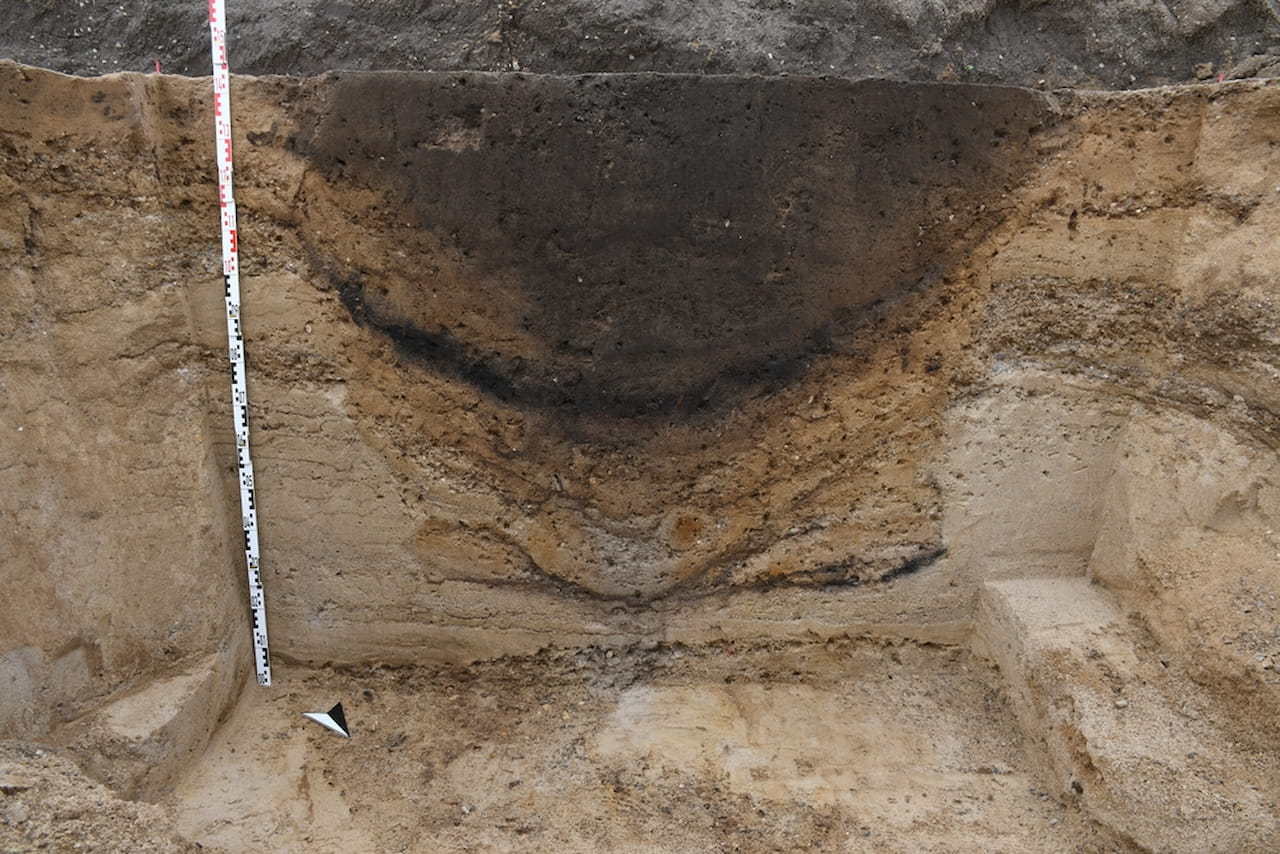
The outstanding results produced by the intense research of the village around the circular sanctuary once again demonstrate the exceptional importance of this site, which goes far beyond the borders of Saxony-Anhalt, said State Parliament President Dr. Gunnar Schellenberger during his visit to the excavation.
While scientific analyses and the interpretation of results with various specialists continue, excavations will continue in Pömmelte until mid-July 2024. This year’s excavation areas to the west and east of the circular sanctuary cover “only” 8,150 square meters.
In the future, the main findings from the interdisciplinary and international research of the circular sanctuary of Pömmelte and its surroundings will also be incorporated into the permanent exhibition of the State Museum of Prehistory. They will be presented in the newly designed exhibition hall on the Early Bronze Age starting in the summer of 2025.
Discover more from LBV Magazine English Edition
Subscribe to get the latest posts sent to your email.



